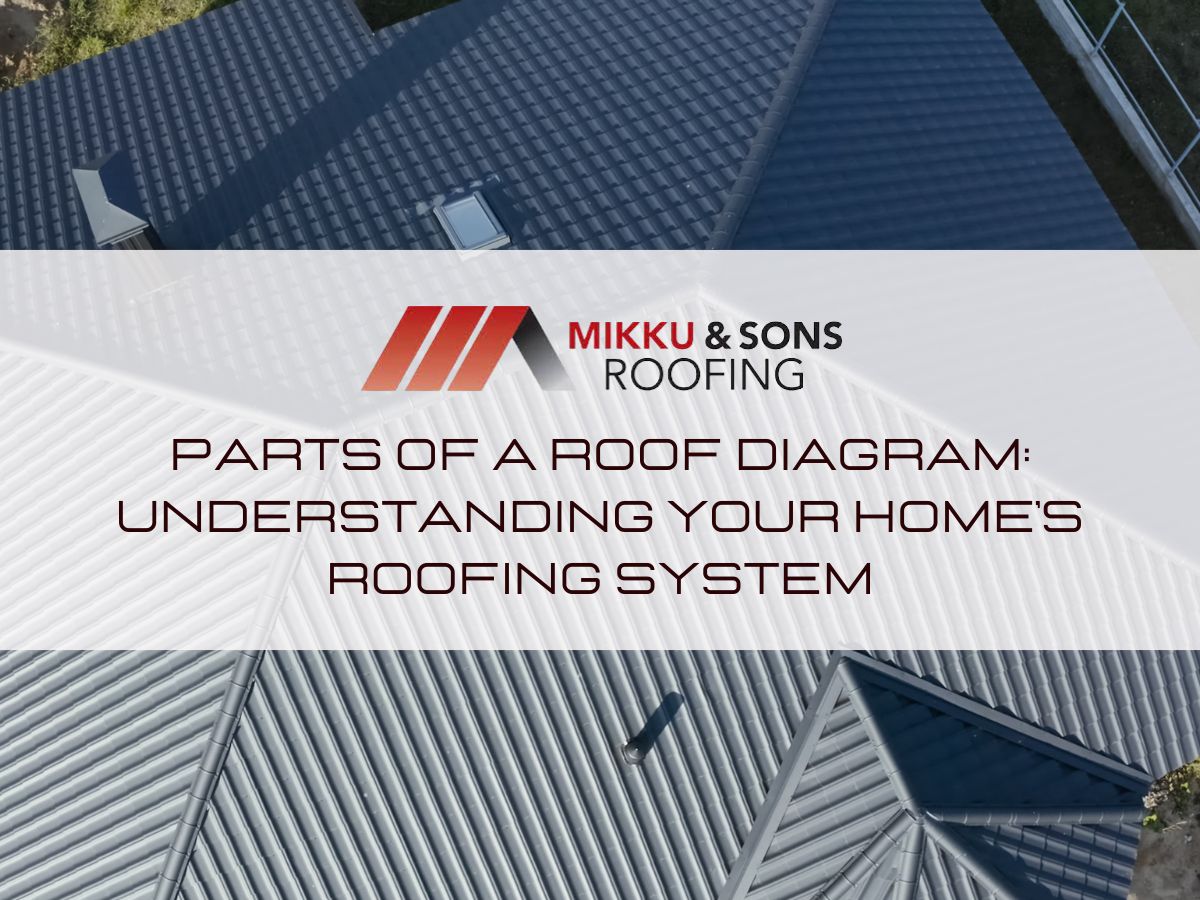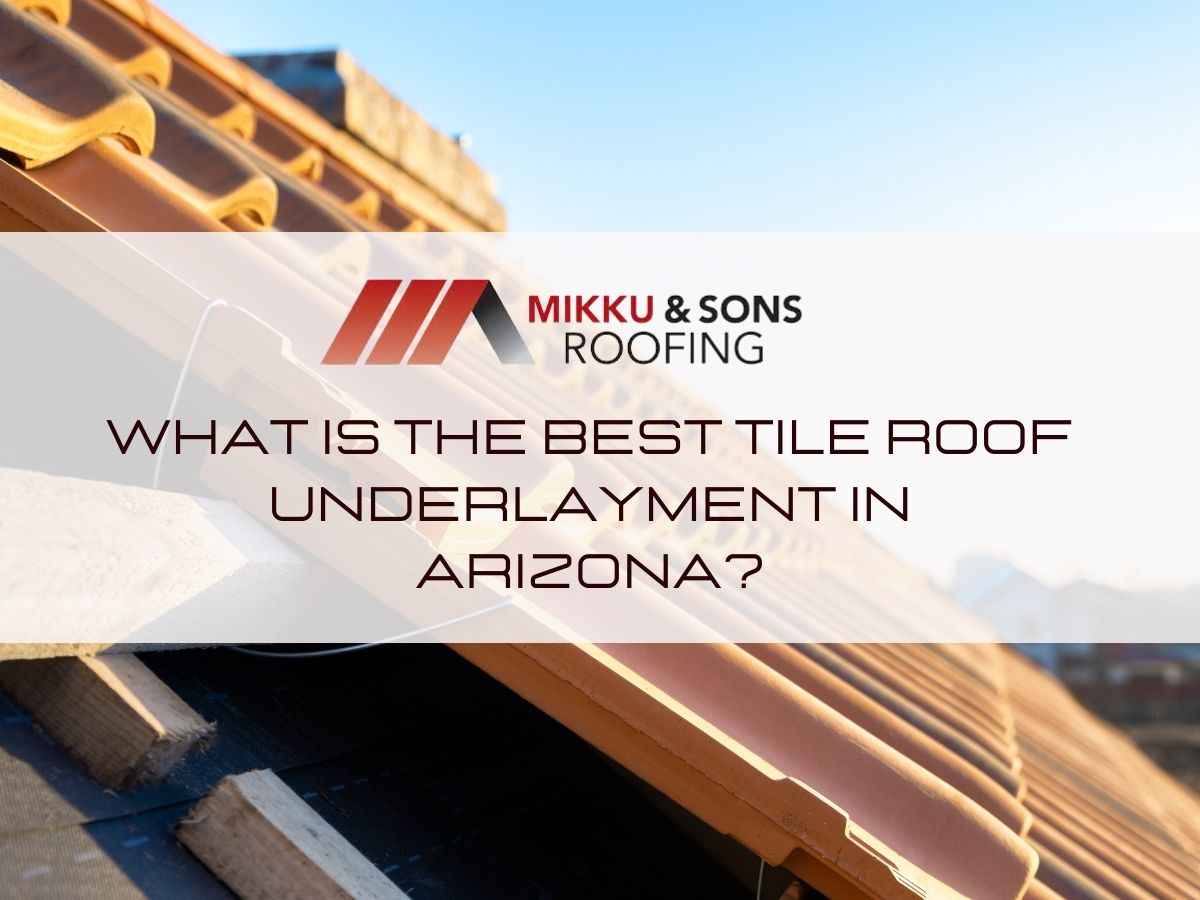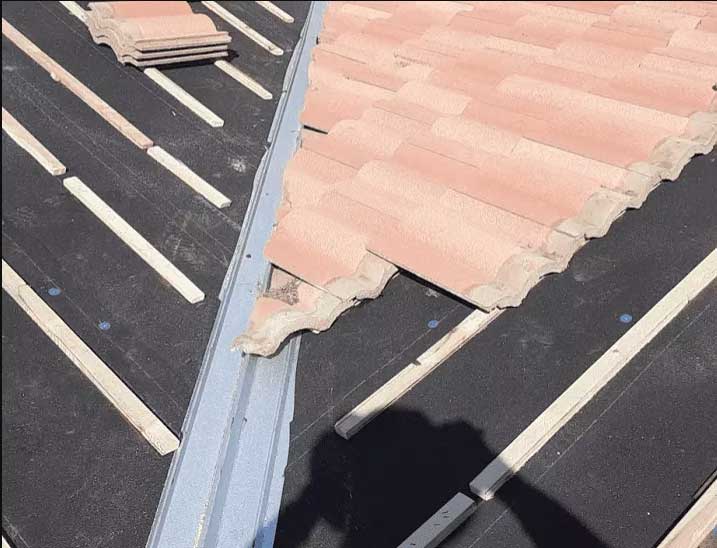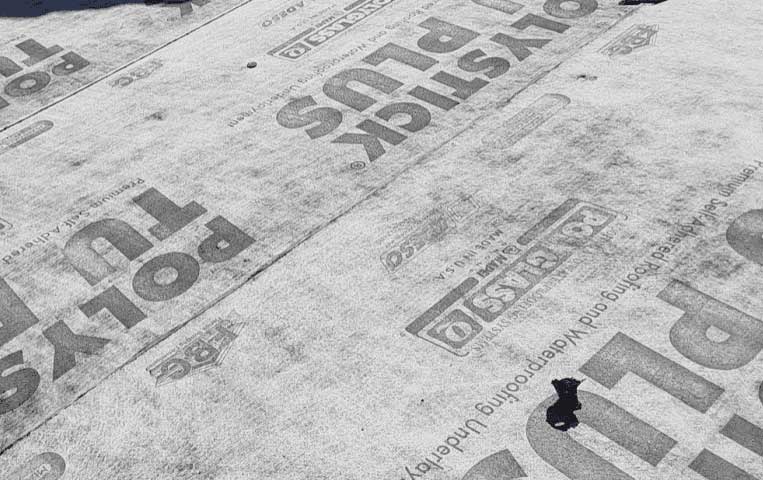

Tile roofs can last up to 50 years in Arizona. However, the tile underlayment (felt/ tar paper) typically lasts 20 to 30 years. The tile underlayment will start rotting out when water gets under the roof tiles. Tile underlayment is a roofing material that is installed straight to your roof's decking and acts as a waterproofing membrane.
The most common ways water can get under roof tiles are: clogged valleys/ roof flashing, broken tiles, or the roof tiles not laid properly.
Roof tiles are mainly aesthetic and act as a barrier between the tile underlayment and the roof tile.
The Arizona sun will destroy tile underlayment if it is exposed. Most tile underlayments cannot withstand the UV rays and start deteriorating rapidly.
There are some tile underlayments that are designed for heat and sunny climates such as Arizona’s. So, let’s explore what is the best tile roof underlayment in Arizona!
Many different types of underlayments can be used under concrete tiles in Arizona. Here are the most common: felt (SBS-modified bitumen), synthetic, and self-adhering underlayments.
We will talk about each type of concrete tile underlayment and determine what is best based on several factors: price, waterproofing, durability, and UV resistance.
Synthetic tile underlayments have been increasing in popularity in Arizona. However, in our opinion, they are not the best material to use. Synthetic tile underlayment is a material that is woven together using polypropylene and polymer and has vapor-resistant and water-resistant qualities.
In fact, we will recommend homeowners not choose synthetic concrete tile underlayments. Let’s talk about why we don’t recommend synthetic concrete tile underlayments.
Some synthetic underlayments are more expensive than the felt type of concrete tile underlayments, while other synthetics are cheaper. In fact, the material price can be double that of a felt type of underlayment. Synthetic tile underlayment costs $0.015 to $0.02 per sq. ft and usually comes in rolls that cover 10,000 sq ft at $150,00 - $200 per roll.
It can be cheaper to do two layers of felt than a single layer of synthetic, depending on the brand of material.
Synthetic is the king of waterproofing capabilities and is 100% waterproof. However, synthetics don’t self-seal around fasteners well (nails, staples, etc). This is the biggest issue when installing synthetic underlayment under concrete tile roofs. A concrete tile roof is comprised of
The underlayment is rolled out to cover the deck's surface (keeping it waterproof) and nailed in place.
Batten strips (4 ft sections of 1×2 wood strip) are then nailed or stapled on top of the underlayment. They provide rows for the roof tile cleats to rest on and prevent them from sliding down the roof.
Then the roof tiles themselves.

Installing a tile roof requires both the batten strips and underlayment to be fastened to the deck. So, with a synthetic underlayment that doesn’t automatically seal around the fastener’s penetrations, your roof is vulnerable.
The number one reason your concrete tile roof leaks is from water getting under the batten strips and going through the fastener's penetrations.
Rubber-modified felt papers will automatically seal these penetrations while synthetics will not.
So even though synthetics have a 50 years product warranty they are not the best tile underlayment for sealing the around the roof fasteners.
As far as durability, synthetic roof material is quite durable. However, when synthetic tears it tends to tear in big sections. Synthetic concrete tile underlayments have a durable surface for foot traffic and have an excellent non-slip surface
Synthetic underlayment has very strong UV-resistant qualities. When exposed to the direct sun, the underlayment can maintain a UV resistance from 6 to 12 months
This underlayment is different from both the synthetic and felt underlayment because it has a self-adhering bottom. When installing a thin film is pulled away and the self-adhering bottom adheres to the roof's deck.
The gives the advantage of leaving no roof fasteners (cap nails) exposed.

Another benefit is most of the self-adhering concrete tile underlayments are rubber-modified and automatically self-seal around any nails pounded through its surface.
Self-adhering concrete tile underlayments are generally more expensive. Self-adhering tile underlayment also called rubberized asphalt roofing underlayment, is $0.05 to $0.075 per sq. ft and costs $100 - $150 per roll that covers 2,000 sq ft. Note: this is just the material price and not what it costs for installation. It is usually around the same price to use synthetic underlayment.
This concrete tile underlayment is excellent at waterproofing. It has a lot of rubber inside of it and lasts a very long time. The seams are adhered together providing a waterproof surface.
Self-adhering concrete tile underlayment is the most durable underlayment available in Arizona. Specifically, the brand, Boral Tile Secure, is the best concrete tile underlayment in Arizona for the durability factor. It can be used under metal roofs so it has a very high melting point.
The surface is non-slip and can handle high foot traffic which is good for the installers!
This material can handle a lot of UV exposure and lasts up to 6-12 months of direct Arizona sun! For UV Resistance, self-adhering underlayment is the best underlayment for tile roofs in Arizona
Felt-style underlayments have been around the longest out of the other two types. They are different classes and types of felt that are used under concrete tiles in Arizona. This material is a blend of cellulose, asphalt, polyester, and bitumen soaked in a waterproofing agent. In layman's terms, it is felt paper saturated with asphalt.
Felts thicknesses are organized by weight classes ranging from 30# to 90#. Some felts are better than others.
Organic felt tile underlayment was used a lot 20 to 30 years ago. However organic felt is the cheap option. It tends to dry up and curl on the seam edges with age.
Also, there have been incidences where roof rats have chewed up all the organic felt paper under tile roofs causing the roof to leak severely.
The better felts are the SBS Rubber modified bitumen. They are fortified with rubber which helps the underlayment lay flat on installation. The rubber also helps the material to self-seal around the roof fasteners.
The price for SBS rubber modified bitumen is the cheapest out of the other two options. In many cases, it is costs less to apply two layers of SBS rubber modified felt than one layer of synthetic or self-adhering underlayment.
For the price, felt is the best underlayment for tile roofs in Arizona, and costs around $30-$40 per roll and each roll cover around 4000 sq ft, which means it costs $0.0075 to $0.01 per sq ft. Note: this is just the material price and not what it costs for installation.
Organic felt is not 100% waterproof, but the SBS-modified version has more rubber, allowing it to be more water proof than the organic felt.
In Arizona, we have a very dry climate so SBS modified felt papers are more than enough to keep your roof dry.
The composition of the SBS prevents it from rotting and deteriorating like its organic cousin.
Felts are quite durable and can handle foot traffic quite well. The organic felts are less durable than SBS-modified felts.
However, if the felt is installed in high temperatures the asphalt becomes pliable and the tar paper can slide when being installed. This is a hazard for the roofers since the tile roofs have a pitch.
Both the self-adhering and synthetic concrete tile underlayments have better UV resistance than felt. If a tile breaks on your tile roof and exposes the surface of the underlayment it is advised to get the tile replaced as soon as possible.
The SBS-modified felts are generally more UV resistant than the organic felts. Felt does not win the UV resistance test for underlayments in Arizona.
The synthetics are out ruled out being that they are not self-sealing when a nail is pounded through their surface. In fact, we would NOT recommend synthetics under tile at all for Arizona. It is the best underlayment for under shingle roofs in cold climates.
One of the biggest faults synthetics have is not being repairable. One of the other two options is if there is a premature leak then they can easily be repaired with more felt and tar.
Many times a tile roof starts leaking in a high water flow area years before the rest of the underlayment needs to be changed. In our opinion synthetics is one of the worst underlayments for tile roofs in Arizona.
While self-adhering underlayment is the best tile underlayment in Arizona for durability, length of life and UV resistance, an SBS rubber-modified felt is our pick.
The particular brand that we like the most is TU-43. Tu-43 lasts a long time, it can easily be repaired, has a rubber and fiberglass core, and it is has a reasonable price tag.
However, Boral Tile Seal would be our pick for the best self-adhering tile underlayment in Arizona. It just comes at a higher price.
Installing two layers would be cheaper than one layer of the self-adhering underlayment and last around the same time (some cases even longer).
So, if you need the underlayment replaced under your tiles in Arizona then we would recommend TU-43 as the choice of tile underlayment material. In our opinion, TU-43 is the best underlayment for tile roofs in Arizona!
